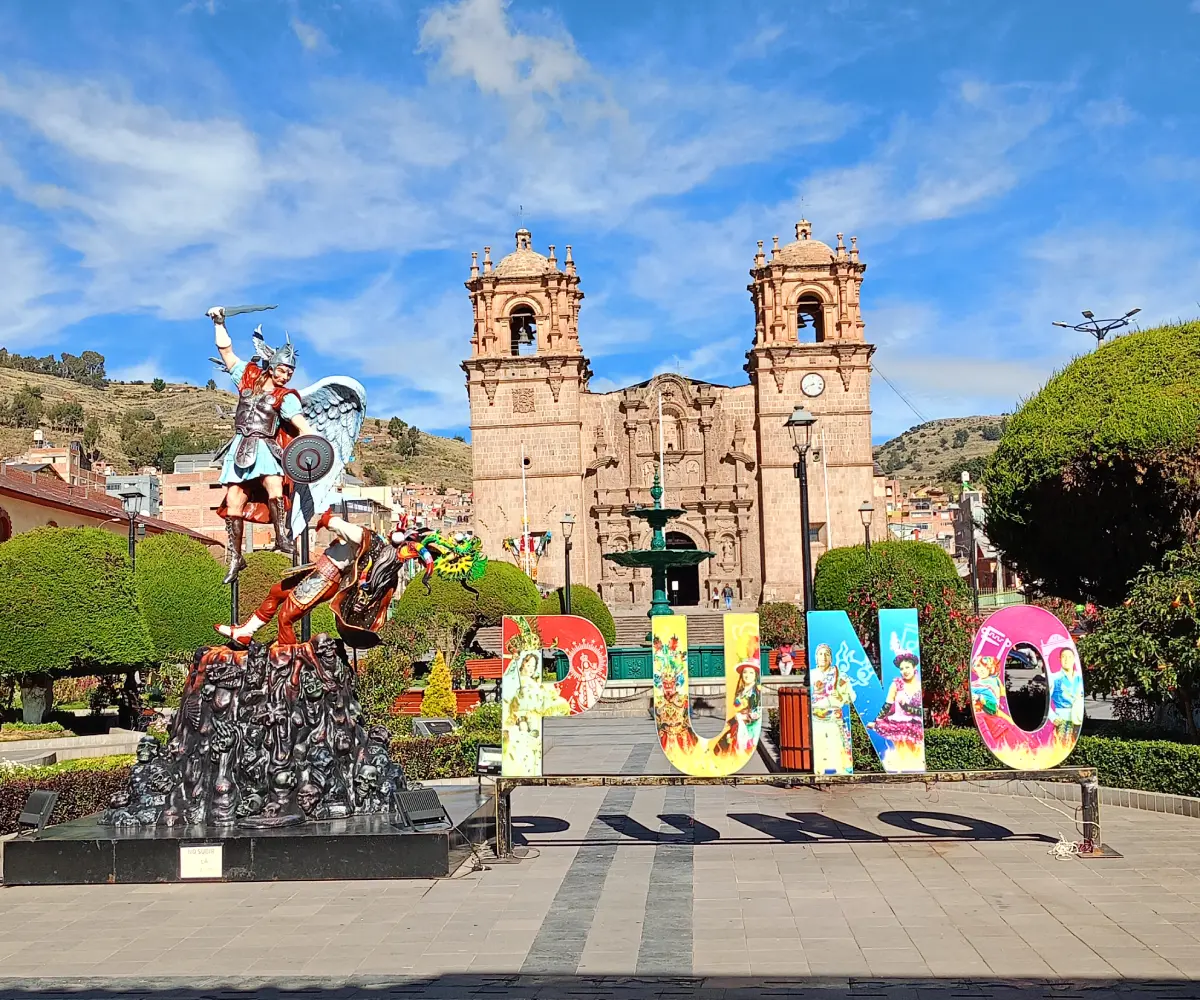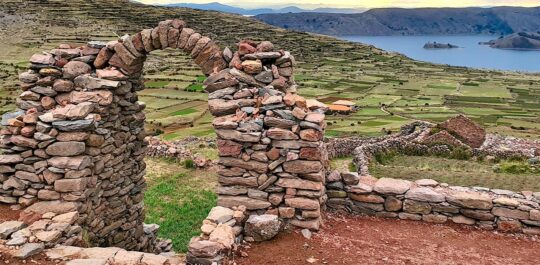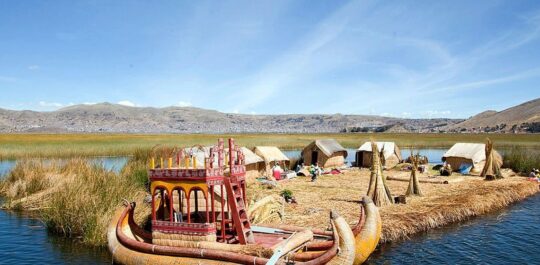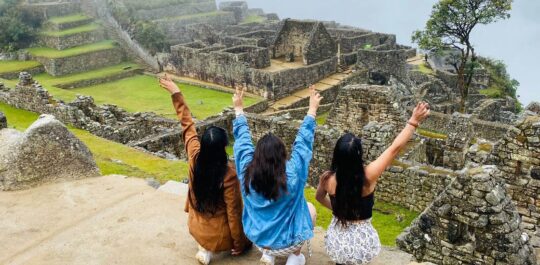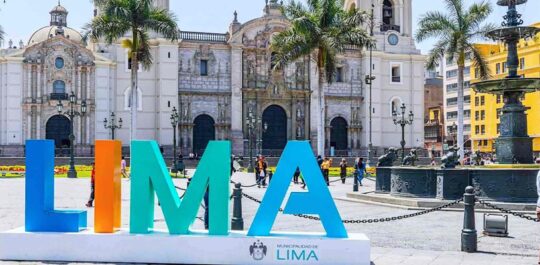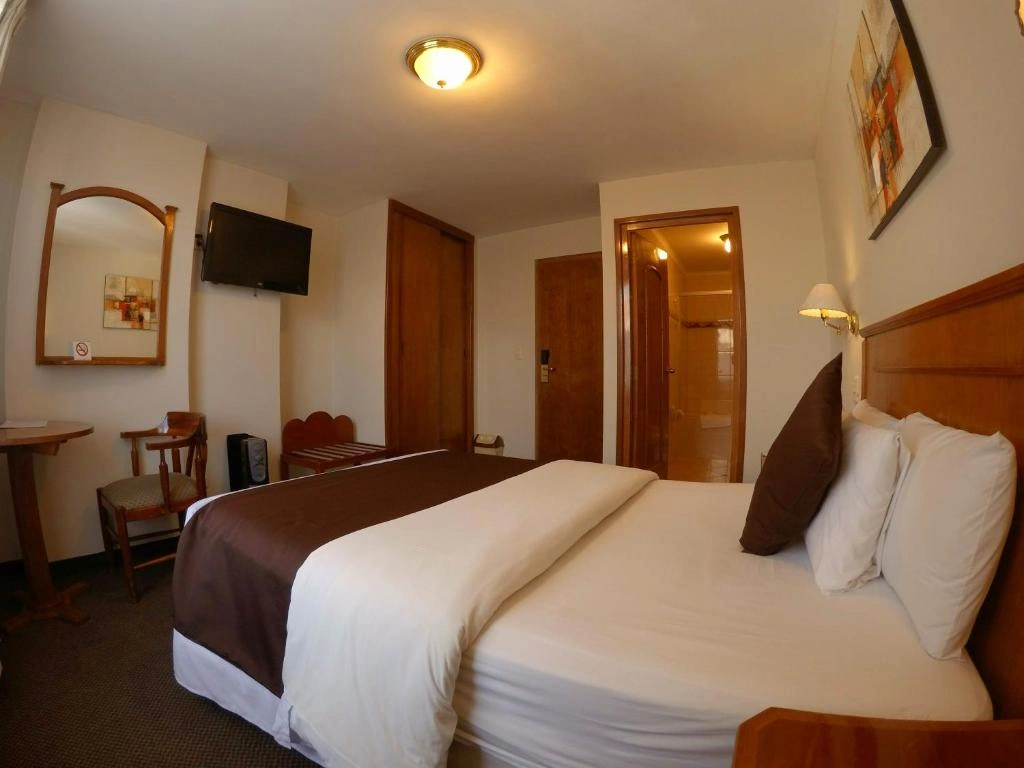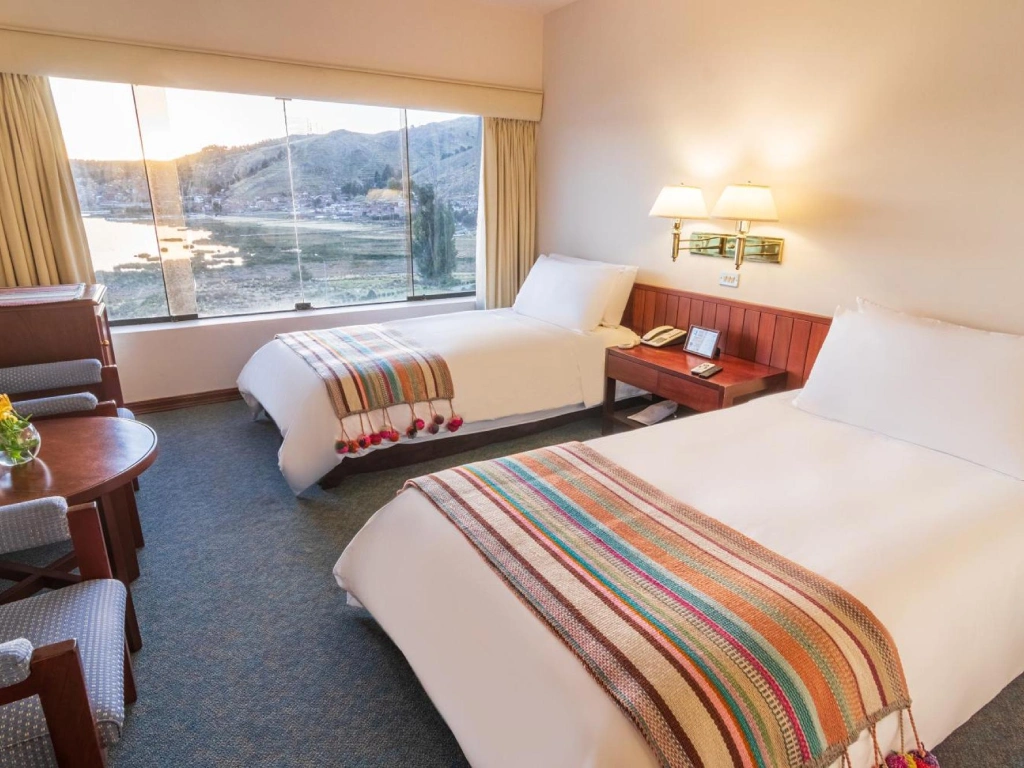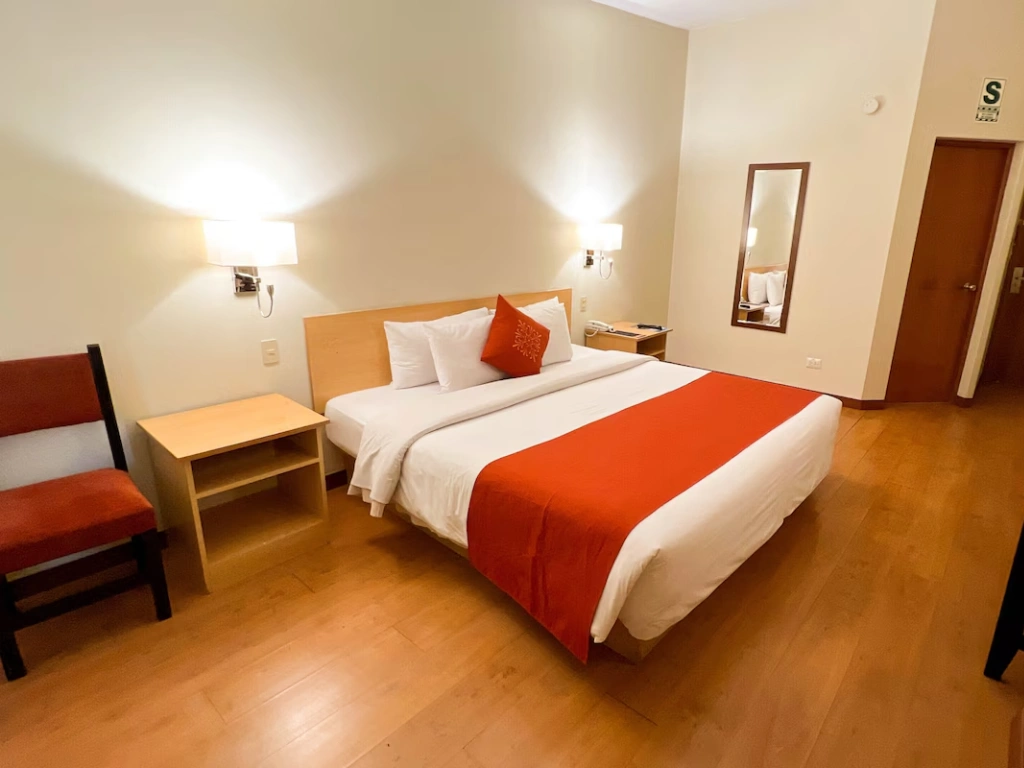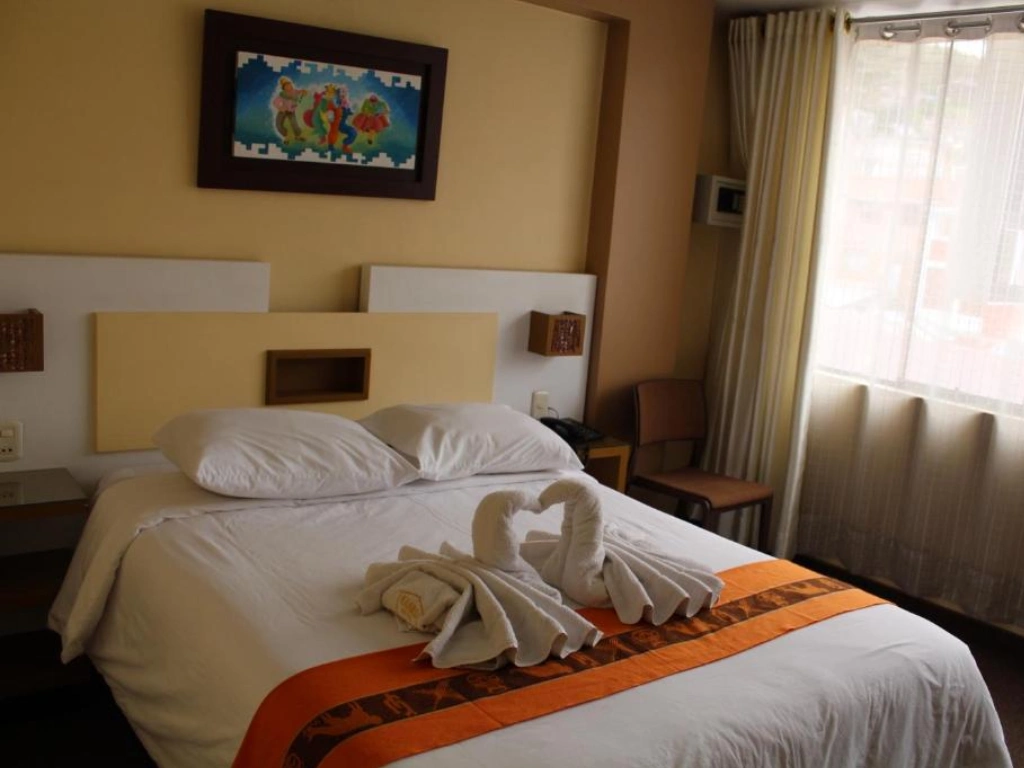Dreamy Tours invites you to experience the magic of Puno, Peru, where the enchanting Lake Titicaca and its islands await. Immerse yourself in authentic Andean culture as you explore:
- The captivating Floating Islands of the Uros, hand-built from totora reeds.
- Taquile Island, renowned for its UNESCO-recognized traditional textiles.
- The mysterious Sillustani Funeral Towers, ancient burial chullpas with breathtaking views.
Our tours are carefully crafted to help you discover Puno’s true essence – its pristine nature, living traditions, and warm-hearted people. Whether you seek a family adventure or cultural journey, we have the perfect experience for you.
Book today and discover authentic Puno!
Best Tours in Puno
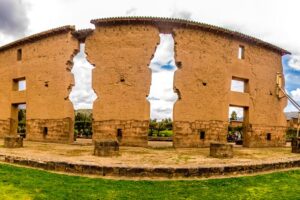
The Sun Route: Cusco & Puno – Full-Day Tour
The city of Cusco is rich, for the amount of tourist resources it presents, and for the history that precedes it.
See More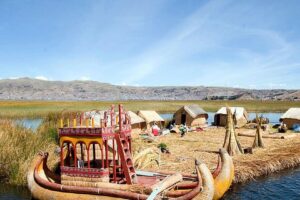
Uros Island, Taquile and Night on the Floating Island
The city of Puno, capital of the department of the same name, located on the shores of Lake Titicaca
See More
Uros – Amantani and Taquile 2 Days
Visit the attractive islands of Lake Titicaca such as Amantani, Los Uros and Taquile, where you will appreciate platforms built in pre-Columbian times...
See More
Uros and Taquile – Full-Day Tour
On the way to the island of Taquile we visit the floating islands of the Uros.
See More
Sillustani – Full-Day Tour
In the cemetery, you can see structures of a monumental nature, in the presence of the so-called chullpas that reach 12 meters.
See More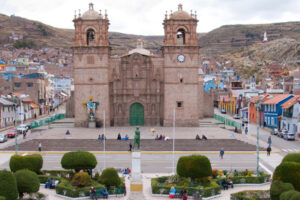
Puno City Tour – Full-Day Tour
The city of Puno, capital of the department of the same name, located on the shores of Lake Titicaca
See MorePackages and Offers in Puno
Questions
Frequently asked questions from our customers
What is the Route of the Sun?
The Route of the Sun is a tourist route that goes from Cusco to Puno (or vice versa), through incredible Andean landscapes. You can do it by bus or on the luxury Andean Explorer train. It includes stops at traditional villages, lagoons and archaeological sites. It’s a good alternative to the Inca Trail.
What is Lake Titicaca in Puno?
Lake Titicaca Puno is a huge and very special lake. It’s the world’s highest navigable lake and is full of islands, stories and traditions. According to legend, the Sun was born here. Boats depart from Puno’s port to the floating Uros Islands, Taquile and Amantaní. The water is cold, but the landscape is beautiful, with mountains and clear skies.
What is the Salinas and Aguada Blanca National Reserve?
It’s a large natural area with vicuñas, alpacas, lagoons and volcanoes. It’s located between Puno and Arequipa. Here you can see wild vicuñas walking freely, take photos with volcanoes in the background and feel the pure air of the altiplano. It’s ideal for a day trip and part of tourist tours from Puno.
What to do on the Uros Islands?
On the Uros Islands you can:
- Take a ride on a totora reed boat
- Learn how they build the houses and islands
- See how they hunt and fish
- Buy handmade souvenirs
- Take photos with the islands and lake as background
All this with a guide who tells you the history of the Uros Puno. It’s part of many tours in Puno and one of Puno’s most visited tourist spots.
Where is Puno located?
Puno is in southeastern Peru, in the region of the same name. It’s on the shores of Lake Titicaca, near the border with Bolivia. The city is at 3,810 meters above sea level, so the air is thinner and you might find it hard to breathe at first. It’s a key point between Cusco and Bolivia, and many people visit it on the Cusco Puno Route of the Sun.
What clothes to bring to Puno?
Bring warm clothes, because it’s cold, especially at night. Ideal:
- Thermal jacket
- Hat, scarf and gloves
- Layered clothing (you can add or remove as needed)
- Sunscreen (the sun is strong at this altitude)
- Comfortable walking shoes
What is Pucará Puno?
Pucará is a town known for its “cabezas clavas”, stone sculptures shaped like bulls or jaguars. It has an interesting museum and is located between Puno and Juliaca. Many tours include a quick stop here.
What to visit in Puno in 3 days?
If you have 3 days in Puno, you can have a complete experience combining culture, nature and tradition. Here we propose an ideal itinerary:
Day 1: Floating Islands of Uros + Taquile Island
Start with a tour in Puno to the floating Uros Islands, where you’ll see how families live on islands made of totora reeds. Then take a boat to Taquile Island, famous for its textiles and dances. You can have lunch there, walk along trails with lake views and return to Puno in the afternoon.
Day 2: Sillustani Puno + Puno City Tour
Visit the chullpas of Sillustani, ancient stone funeral towers overlooking Lake Umayo. It’s a peaceful place full of history. In the afternoon, take a Puno city tour: walk around the main square, waterfront, port and artisan market. If you’re here in February, don’t miss the Fiesta de la Candelaria.
Day 3: Amantaní or Salinas and Aguada Blanca Reserve
Option 1: Amantaní Island – A full-day tour or overnight stay with a local family. Ideal for connecting with Andean culture.
Option 2: Salinas and Aguada Blanca National Reserve – To see wild vicuñas, lagoons and volcanoes. Perfect if you’re traveling to Arequipa afterwards.
This plan includes Puno’s main tourist attractions and is ideal for those doing the Cusco Puno Route of the Sun or going to Bolivia.
What is Taquile Island?
Taquile Island (or Taquile Island Puno) is a place where people live with very ancient customs. The men are famous for their fine weaving with symbols, and the women for their large skirts and hats. There are no cars, only stone paths. You can climb to viewpoints, see dances, eat local food and buy unique textiles. It’s part of the most popular tours to Puno.
Can you go to Isla del Sol from Puno?
Yes, although Isla del Sol is in Bolivia, many tours depart from Puno. First you go to the Bolivian city of Copacabana, and from there take a boat to the island. According to legend, this is where the Sun was born and where the Inca empire began. It’s a magical place, with trails, ruins and lake views.
What to do in Puno?
You can:
- Visit the floating Uros Islands
- See Taquile or Amantaní
- Explore Sillustani
- Take a Puno city tour of the main square and waterfront
- Try typical food: fried trout, quinoa, olluco soup
- Go to the artisan market
All this is part of tourism in Puno and Lake Titicaca tours.
Location and unique characteristics of Puno
Puno, known as the Folkloric Capital of Peru, is located in the southern Andean region on the shores of majestic Lake Titicaca (3,827 masl), the world’s highest navigable lake. This city is the cultural heart of the altiplano, where Quechua and Aymara traditions converge, offering:
- An incomparable natural setting with the lake as protagonist
- Colonial architecture in the historic center
- Colorful festivals throughout the year
- Unique Andean gastronomy with local ingredients
Key fact: Puno is strategically located to also visit Cusco, Arequipa and Bolivia.
MAP
What is Puno?
Puno is a city in southern Peru, located beside Lake Titicaca, the world’s highest navigable lake. Known as the “Folkloric Capital of Peru” for its beautiful dances, music, and grand festivals like the Fiesta de la Candelaria. From here, you can visit incredible places like the Floating Uros Islands, Taquile Island, and the archaeological site of Sillustani. It’s a destination rich in culture, history, and Andean landscapes.
How to get to Puno?
There are several ways to arrive:
- From Cusco: You can take a bus (7-8 hours) or the luxury Andean Explorer train (10 hours with spectacular views).
- From Arequipa: By bus, it takes about 6-7 hours.
- By plane: You can fly to Juliaca (nearest airport) and then take a taxi or bus to Puno (1 hour).
Many tours include transportation, especially if coming from Cusco.
What is Sillustani Puno?
Sillustani Puno is a site with large stone towers called chullpas, which were tombs for pre-Inca leaders. It’s on a hill overlooking Lake Umayo. A peaceful place with rich history and beautiful landscapes. Many tours include a visit here, especially if traveling to/from Cusco. The Sillustani chullpas are very tall and well-preserved.
What are the Floating Uros Islands?
The Floating Uros Islands are small islands made of totora reeds, a plant that grows in the lake. The Uros people have lived here for centuries. The islands gently move with the water and are renewed every few months. You can visit them on a tour, ride a totora reed boat, see daily life, and buy handicrafts. A truly unique global experience.
Can you stay overnight on Taquile or Amantaní?
Yes! You can spend a night on Taquile or Amantaní Puno through community tourism:
- Stay with a local family
- Share meals
- Learn about their traditions
Bring warm clothes, biodegradable soap, and an open mind for this heartwarming experience.
How many days to spend in Puno?
2-3 days is ideal. This allows time for:
- 1 day: Uros Islands + Taquile
- 1 day: Sillustani or Amantaní
- Half-day: City tour or market
Puno makes a perfect stop between Cusco and Bolivia.
What is Macusani?
Macusani is a town in Carabaya Province, Puno region. Less touristy, it offers stunning landscapes, lagoons, and strong rural culture. Adventurous travelers visit for off-the-beaten-path experiences.
Where to stay in Puno?
The city has hotels for all budgets. For island tours, you’ll stay in family homes on Taquile/Amantaní. Central hotels near the port and main square provide easy tour access.
What are Puno tours?
Organized excursions to key sites like:
- Uros/Taquile Islands
- Sillustani
- Salinas Reserve
Includes transport, guide, entrance fees, and meals. Book through agencies, hotels, or directly at the port for a hassle-free experience.
Recommended days in Puno?
2-3 days lets you:
- Do key tours (Uros, Taquile/Amantaní, Sillustani)
- Explore the city (try fried trout, sunset at the waterfront)
- Acclimate to the altitude (3,810 masl)
- Allow flexibility for weather
Tip: With just 1 day, prioritize Uros + Taquile.
What is the Fertility Temple?
Near historic Pucará, this temple features large phallic-shaped stones believed to be used in ancient harvest/health rituals. A unique stop between Puno and Juliaca.
Top tourist sites in Puno?
Puno blends nature, history, and culture through:
- Floating Uros Islands – Totora reed islands home to the Uros people
- Taquile Island – Famous for textiles and lake views
- Amantaní – Spiritual island for homestays
- Sillustani – Pre-Inca funeral towers
- Salinas Reserve – Wild vicuñas and altiplano scenery
- Fertility Temple – Symbolic monoliths near Pucará
- Lampa – Charming colonial church
- Macusani – Rural highland landscapes
- Puno Port – Gateway to the islands
- Aramu Muru – Mystical “Energy Door” near the border
All are included in Lake Titicaca tours offered by local agencies.
Guides
Puno Travel Guides
Prepare for an immersion into the wondrous history and culture of Puno, Peru’s folkloric capital nestled along the shores of Lake Titicaca, the world’s highest navigable lake. Our travel guide will help you plan your visit to this Andean city, renowned for:
- Its breathtaking Floating Uros Islands
- The fascinating Taquile Island with its UNESCO-recognized textiles
- The mysterious Sillustani Funeral Towers
- An exquisite culinary scene featuring lake trout and other local delicacies
Connect with Quechua and Aymara traditions as you explore one of South America’s most authentic destinations.

Transport
Transportation in Puno
At Dreamy Tours, we’ve partnered with Viamed Perú to provide you with:
- Safe transfers throughout Puno and Lake Titicaca
- Comfortable transportation to visit the Uros Islands, Taquile, and Sillustani
- Reliable service for all your tours and excursions
Enjoy your Titicaca region adventure with the seamless mobility guarantee that only our partnership can deliver.

Accommodation
Accommodation in Puno
Discover the perfect stay in Puno, Peru, with lodging options ranging from standard to superior hotels—all in prime locations.
Situated near the waterfront, Puno’s port, and the historic center, you’ll have easy access to top attractions like, The floating Uros Islands, Lake Titicaca, Sillustani archaeological site, The artisan market.
Ideal for travelers seeking comfort, safety, and proximity to Puno’s most popular tours.
Prime Location:
- The floating Uros Islands
- Lake Titicaca, Sillustani archaeological site
- The artisan market
Amenities:
- Rooms with Lake Titicaca views
- Essential services for relaxation
- Cozy highland atmosphere
Experience Puno—the Folkloric Capital of Peru—from the comfort of its heart.
Start planning today!
Reviews
Experiences that speak for themselves
Blogs about Puno
Learn about Puno’s culture, Lake Titicaca, the Uros floating islands, Sillustani, Taquile Island, and more with our blogs. Discover tips, stories, and what to expect from your trip to Puno. Ideal for preparing for Puno tourism and making the most of your tours and the Route of the Sun.
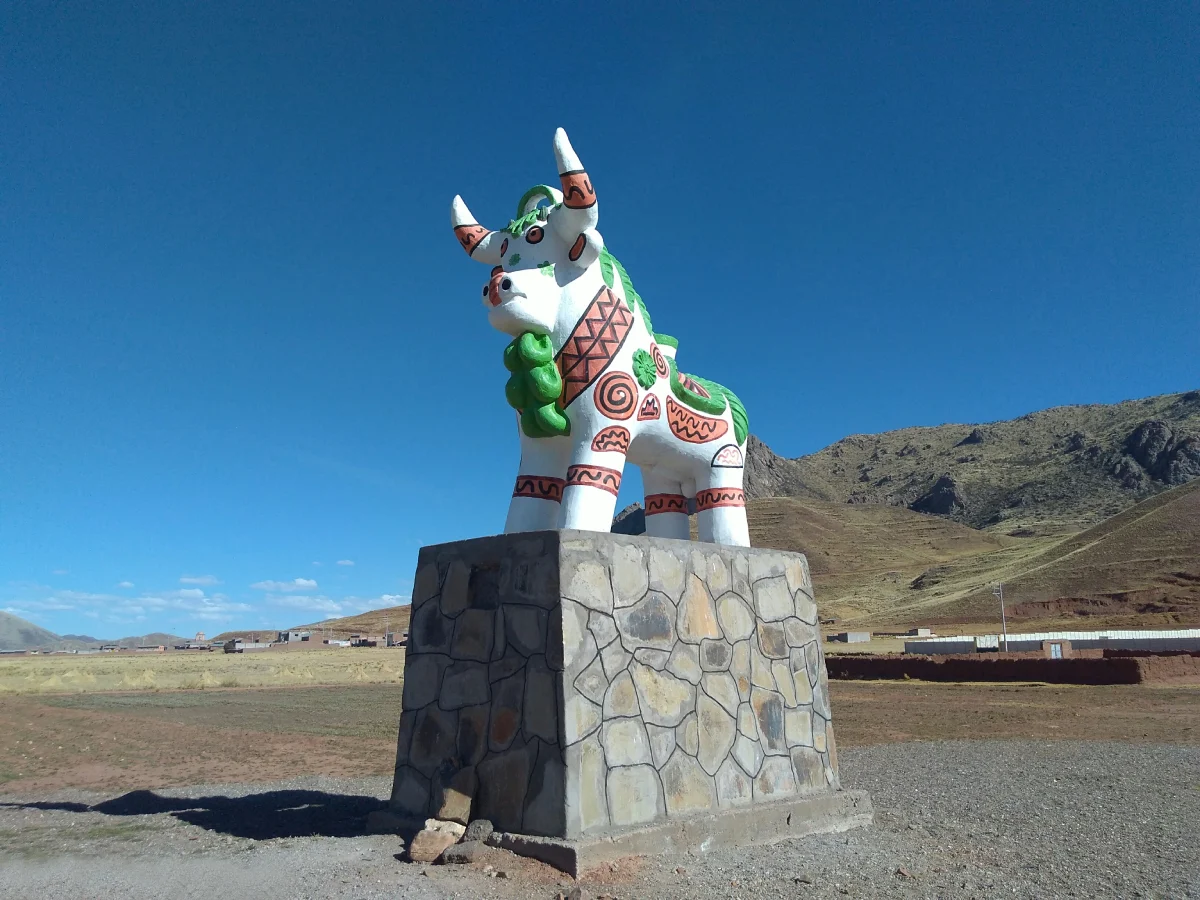 Blogs - puno
Blogs - puno
Discover the Torito de Pucará: The Andean Guardian of Good Fortune
Hello, lovers of Andean culture! I am part of the Dreamy Tours team, and today I invite you to discover the Torito de Pucará, an iconi...
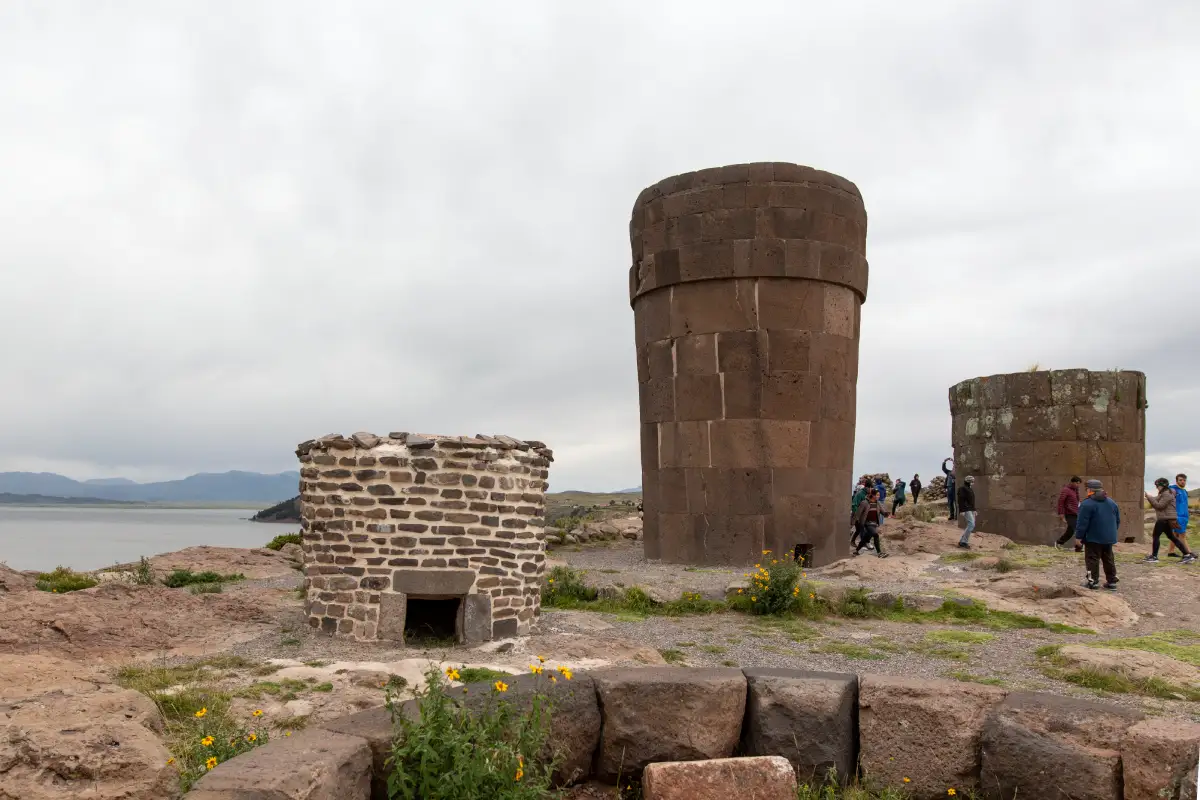
Discover the Chullpas of Sillustani: Kolla Necropolis in the Altiplano
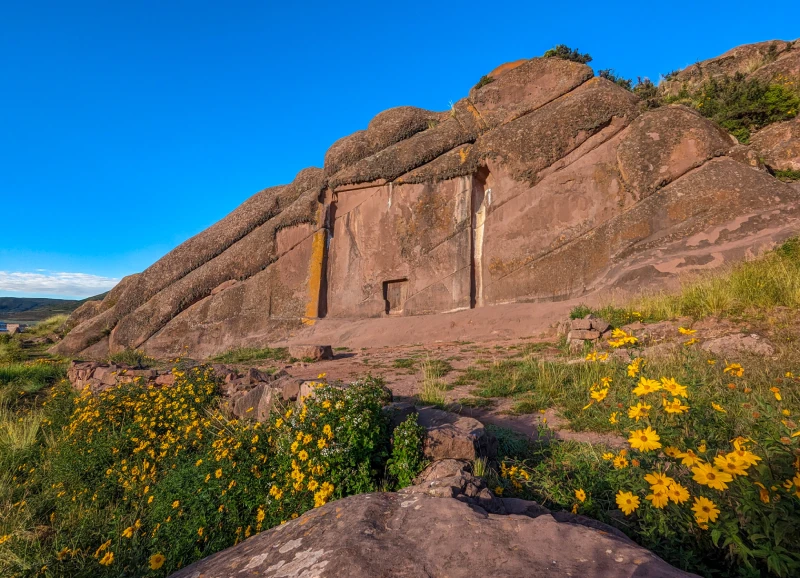
Aramu Muru: The Mysterious Portal of the Gods in Puno
